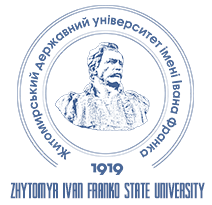BILINGUALISM TYPES AND THEIR DIDACTIC POTENTIAL
DOI:
https://doi.org/10.35433/pedagogy.1(100).2020.151-158Keywords:
bilingual education, lingual interference and transferring, educational environment, cultural competence, communication skills, language functionsAbstract
Current article is dedicated to such types of bilingualism as the coordinating and subordinated, pure and mixed, their substantial didactic potential, as well as the necessary conditions for bilingual capacity realization through creating a functional environment. Authors of the research have studied theories and concepts of bilingualism, organizational experience of bilingual and multilingual education, along with linguistic directions, determining bilingualism basically as the ability to communicate with two languages. Due to the methodological background of our research, which is composed of the outcomes of the analytic-synthetic examination of scientific-methodological works, logic methods of notions analyzing, methodological modelling, surveys results and experts’ evaluations, we succeeded in identifying general concepts of the question and developing the methodological system for delivering new foreign language knowledge to bilingual students.
Basic principles of bilingual education have been released, they included: didactic cultural rationality, problem-searching and problematic forms of education, priority of teaching cooperation through education and self-education, integration and interactivity of modelling multicultural bilingual education, didactic cooperation of traditional pedagogics and individuality-focused education, consideration of the educational rights of a person while modelling cultural training environment. Specifications of functional usage of native and new languages have been scrutinized. The cases of the interference, rising in the process of studying a second foreign language in the conditions of multilingualism, have been analyzed. Most frequent and possible mistakes of the respondents-leaners have been classified. Consequently, it has been concluded that the whole bilingual learning process ought to be composed in order to transfer communicative skills of the native and the first foreign language to the second one.References
Vodyasova, L.P. (2017). The development in students concepts of language aesthetic ideal while studying stylistics. Modern science. 7, 132-134 [in English].
Homel, P., Palij, M., & Aaronson, D. (2014). Childhood Bilingualism: Aspects of Linguistic, Cognitive, and Social Development. New York, USA: Psychology Press [in English].
Chumbow, S.B. (2018). Multilingualism and Bilingualism. London, UK: IntechOpen [in English].
Bekerman, Z., & McGlynn, C. (2007). Addressing Ethnic Conflict through Peace Education: International Perspectives. Hershey, PA: Information Science Reference [in English].
Sciriha, L. (2016). International Perspectives on Bilingualism. Cambridge, UK: Cambridge Scholars Publishing [in English].
Pavlenko, A. (2011). Thinking and Speaking in Two Languages. Bristol, UK: Multilingual Matters [in English].
Groot, M.B. (2011). Language and Cognition in Bilinguals and Multilinguals: An introduction. New York, USA: Psychology Press [in English].
Ardila, A., & Ramos, E. (2007). Speech and Language Disorders in Bilinguals. New York, USA: Nova Science Publishers [in English].
Byram, M. (2011). The Common (European) CEFR of Reference – teaching foreign languages, mediation and intercultural competence. Annual Review of English Learning and Teaching. 16, 63-70 [in English].
Downloads
Published
Issue
Section
License
Copyright (c) 2020 N. V. Voinarovska, A. J. Angus

This work is licensed under a Creative Commons Attribution-NonCommercial-NoDerivatives 4.0 International License.
Authors published in this journal agree to the following terms:
a) The authors reserve the right to author their work and grant the journal the right to first publish this work under the Creative Commons Attribution License, which allows others to freely distribute the published work with a mandatory link to the authors of the original work and the first publication of the work therein magazine.
b) Authors have the right to enter into separate additional agreements regarding the non-exclusive distribution of the work in the form in which it was published by this journal (for example, posting work in an electronic repository of the institution or publishing as part of a monograph), provided that the reference to the first publication of the work is maintained therein. magazine.
c) Journal policy permits and encourages the submission of manuscripts by the authors on the Internet (for example, in repositories of institutions or on personal websites), both prior to submitting this manuscript to the editorial board and as it contributes to the emergence of productive scientific discussion, and has a positive impact on the promptness and dynamics of citing a published work (see The Effect of Open Access).

 ISSN
ISSN 





